SACRAMENTO, Calif. – The California Community Colleges Board of Governors on Monday elected Cecilia V. Estolano to serve as president and Thomas Epstein to serve as vice president for 2017.
The board, appointed by the governor, nominates and elects its president and vice president each November.
“I couldn’t be happier or more honored to be elected as board president by my colleagues,” said Estolano, who served previously as board vice president. “This is a very exciting time for our system, as we prepare to welcome a new chancellor. I’m very much looking forward to working with the board, in partnership with the governor and the Legislature, to help our 2.1 million students to accomplish their educational goals.”
More on the two officers:
Cecilia V. Estolano of Pasadena, was appointed to serve on the board in 2014. She is co-founder of Estolano LeSar Perez Advisors, which provides consulting services to public agencies, foundations, business associations and other stakeholders looking to grow vibrant communities.
Estolano previously served as chief executive officer of the Community Redevelopment Agency of the City of Los Angeles (CRA/LA). Prior to joining CRA/LA, Estolano was of counsel at the law firm of Gibson, Dunn, and Crutcher. Her career also includes service on the California Coastal Commission.
Estolano is a graduate of the University of California, Berkeley School of Law and holds a master’s in urban planning from the University of California, Los Angeles. She received her bachelor’s degree in social studies with honors from Harvard-Radcliffe Colleges.
Thomas Epstein is vice president of public affairs at Blue Shield of California, a statewide not-for-profit health plan based in San Francisco. Prior to joining Blue Shield, he was vice president of communications for the Public Broadcasting Service (PBS) and served in the Clinton White House as a special assistant to the president for political affairs.
Before moving to Washington, Epstein was deputy commissioner for consumer protection and communications in the California Department of Insurance. He earned a J.D. from UCLA School of Law and a bachelor's degree from the University of Pennsylvania, and is a senior fellow at the UCLA Luskin School of Public Affairs.
He is a member of the California Bar and serves on the board of trustees of the Coalition for Clean Air, Enroll America and the Blue Shield of California Foundation.
The California Community Colleges is the largest system of higher education in the nation composed of 72 districts and 113 colleges serving 2.1 million students per year.
For more information about the community colleges, please visit http://californiacommunitycolleges.cccco.edu/ , https://www.facebook.com/CACommColleges or https://twitter.com/CalCommColleges .
News
- Editor
- Posted On
Travelers to Latin America urged to take precautions to prevent Zika
California Department of Public Health (CDPH) Director and State Health Officer Dr. Karen Smith this week warned holiday travelers to protect themselves from mosquito bites when traveling to areas with known transmission of Zika virus, including Latin America.
Many areas of Mexico are now experiencing transmission of the Zika virus, particularly popular tourist destinations, including Cancun, Acapulco, Cabo San Lucas, Puerto Vallarta, Ixtapa, and Mazatlan.
The states of Baja California Sur, where Cabo San Lucas is located, and Sonora, which borders Arizona, have recently reported local Zika virus transmission.
While the state of Baja California bordering California has not reported local Zika virus transmission, the mosquitoes that transmit the virus are present along the border.
The Centers for Disease Control and Prevention (CDC) considers any travel to Mexico to be a potential risk for Zika virus infection.
“Pregnant women and couples contemplating pregnancy need to be particularly cautious because of the severe defects that can be caused to a fetus by the Zika virus,” said Dr. Smith. “Both state and federal public health officials urge pregnant women not to travel to areas with known Zika transmission.”
Zika virus can be spread through mosquito bites and can also be transmitted by both men and women during sex.
All individuals, particularly women of childbearing age, should take steps to protect themselves against mosquito bites while traveling and when they return home.
Sexually active adults who travel to areas with Zika transmission should use condoms or other barriers to avoid getting or passing Zika during sex.
Couples planning pregnancy when either partner has been exposed to Zika virus should speak with a health care provider about a safe time to try to get pregnant. Men should wait six months to conceive after Zika exposure. Women who have been exposed should wait a minimum of eight weeks before becoming pregnant.
“The mosquitoes that can carry and infect people with Zika live in many areas of California,” said Dr. Smith. “If one of these mosquitoes bites an infected person, it can spread the virus by biting another person. That is why we ask people traveling to Mexico, or any other place where Zika exists, to take steps to prevent mosquito bites for three weeks after a trip, even if you don’t feel sick.”
While there has been no local transmission of Zika virus in California to date, CDPH has confirmed 362 cases of travel-associated infections in the state.
To prevent mosquito bites, apply repellents containing U.S. Environmental Protection Agency-registered ingredients such as DEET, picaridin, oil of lemon eucalyptus or IR3535 to exposed skin and/or clothing (as directed on the product label).
Individuals should wear long-sleeved shirts, long pants, socks and shoes when outdoors. Be sure window and door screens are in good condition to prevent mosquitoes from entering your home.
Most people who are infected with Zika do not experience any symptoms. However, symptoms of infection can include fever, rash, joint pain and conjunctivitis (red eyes).
The illness is usually mild with symptoms lasting for several days after being bitten by an infected mosquito. There is currently no vaccine or treatment for Zika other than rest, fluids and fever relief.
More information about Zika can be found in the November 2016 CDPH Health and Travel Advisory, and on the CDPH and CDC Web sites. In addition, the Mexico Ministry of Health Web site contains more Zika-related information, www.cdph.ca.gov .
- Ted Kooser
- Posted On
American Life in Poetry: Prayer
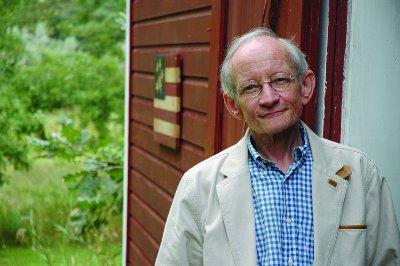
Dana Gioia is the Poet Laureate of California. For six years he served the nation as Chairman of the National Endowment for the Arts.
His new book, “99 Poems: New & Selected, has just been published by Graywolf Press.
This beautiful poem remembers his first son, Michael Jasper, whom Gioia and his wife Mary lost in infancy.
Prayer
Echo of the clocktower, footstep
in the alleyway, sweep
of the wind sifting the leaves.
Jeweller of the spiderweb, connoisseur
of autumn's opulence, blade of lightning
harvesting the sky.
Keeper of the small gate, choreographer
of entrances and exits, midnight
whisper traveling the wires.
Seducer, healer, deity or thief,
I will see you soon enough—
in the shadow of the rainfall,
in the brief violet darkening a sunset—
but until then I pray watch over him
as a mountain guards its covert ore
and the harsh falcon its flightless young.
American Life in Poetry does not accept unsolicited submissions. It is made possible by The Poetry Foundation ( www.poetryfoundation.org ), publisher of Poetry magazine. It is also supported by the Department of English at the University of Nebraska-Lincoln. Introduction copyright © 2016 by The Poetry Foundation. The introduction's author, Ted Kooser, served as United States Poet Laureate Consultant in Poetry to the Library of Congress from 2004-2006.
- Editor
- Posted On
Redbud Audubon hosts program on 'A Bird’s Rainbow' Nov. 17
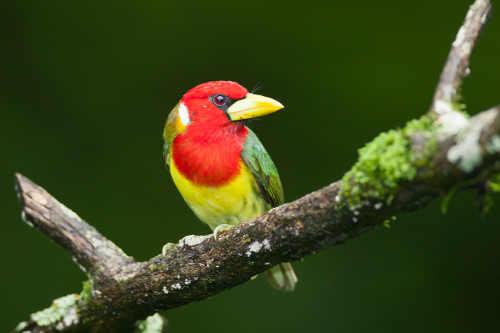 KELSEYVILLE, Calif. – Redbud Audubon is pleased to welcome Bob Lewis to its November meeting on Thursday, Nov. 17.
KELSEYVILLE, Calif. – Redbud Audubon is pleased to welcome Bob Lewis to its November meeting on Thursday, Nov. 17.
Refreshments will be offered at 7 p.m. and the program begins at 7:15 p.m. in the Glebe Social Hall, St. Peter’s Catholic Church, 4085 Main St. in Kelseyville. The program is free and are open to the public.
The title of Lewis' talk is “A Bird’s Rainbow,” and is a look at the fascinating mysteries of the color of birds.
Many birds are brightly colored; others use patterned feathers for camouflage. How do these colors originate? What’s the difference between colors from pigments and physical colors? From yellow warblers to Anna’s Hummingbirds, from snow geese to Brewer’s Blackbirds, each species makes unique use of the feather colors it possesses.
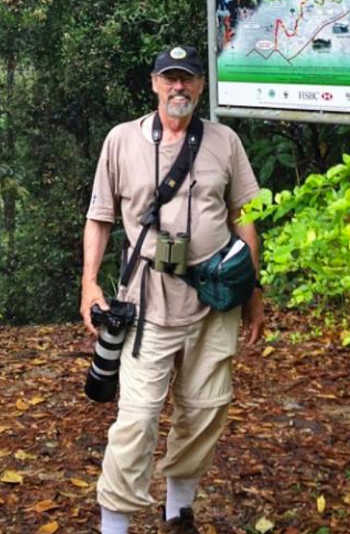
What do the colors indicate to other birds? And do birds see the same colors we do? Lewis will unravel some of the mysteries of color in birds with a little chemistry, a bit of physics and a lot of brightly colored slides.
Lewis trained as a chemist and worked for Chevron for 33 years. He’s taught birding classes in the Bay Area for over 20 years, and served as the chair of Golden Gate Audubon’s Adult Education Committee.
Currently he’s co-teaching a popular master birding class at the SF Academy of Sciences with Jack Dumbacher and Eddie Bartley, and birds of the Bay Area with Rusty Scalf.
He loves to travel and photograph birds, and has recently returned from a trip to Peru, chasing the brightly colored birds of that area.
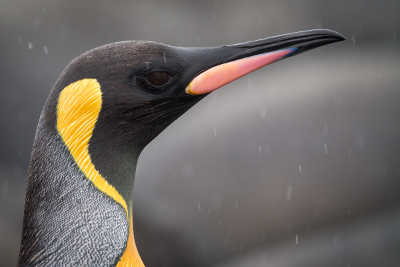

- Elizabeth Larson
- Posted On
Kelseyville Unified School Board to discuss possible move of Kelsey Creek School
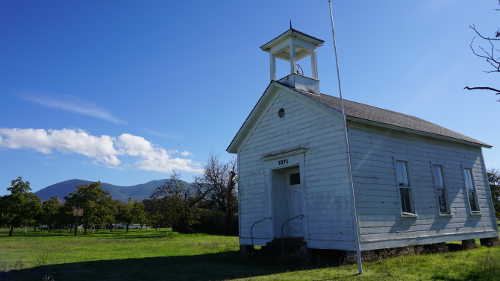 KELSEYVILLE, Calif. – The Kelseyville Unified School District Board of Trustees will hold a discussion this week on a proposal to move the historic one-room Kelsey Creek School from the property where it's been located for 134 years to the Ely Stage Stop.
KELSEYVILLE, Calif. – The Kelseyville Unified School District Board of Trustees will hold a discussion this week on a proposal to move the historic one-room Kelsey Creek School from the property where it's been located for 134 years to the Ely Stage Stop.
The meeting will take place beginning at 7 p.m. Tuesday, Nov. 15, at the district office, 4410 Konocti Road.
The Kelsey Creek Schoolhouse – also known as the Hells Bend Schoolhouse – was built in 1871. It is located on a one-acre parcel in the 3500 block of Finley Road East in Finley.
It is the only one of the county's old original schoolhouses that remains as it did when its district – in this case, the Kelsey Creek School District – lapsed and the school closed, according to “Lake County Schoolhouses,” published earlier this year by Tony Pierucci, the curator of the Lake County Museum system.
The Kelseyville Unified board has two agenda items related to the historic school on its Tuesday agenda.
The first is whether to accept a letter from a group calling itself Friends of the Kelsey Creek Schoolhouse, which is reporting that it intends to abandon a plan to relocate and rehabilitate the building.
The second item is a discussion on donating the school to the Lake County Historical Society, which has submitted a letter requesting the building.
Superintendent Dave McQueen told Lake County News that the second item is discussion only – no action will be taken on Tuesday night.
The letter from the Friends of the Kelsey Creek Schoolhouse explained that it had submitted a proposal in June 2014 to look at moving and renovating the building. However, it has concluded that its plans are prohibitively expensive, estimating that purchasing a new property, and moving and renovating the building could range between $250,000 and $380,000.
The group began talking with the Lake County Historical Society, which is now offering to take the building to the Ely Stage Stop and Country Museum on Soda Bay Road, where in 2007 the stage stop building itself was moved from across Highway 29.
Signing the letter to the board from Friends of the Kelsey Creek Schoolhouse were Marilyn Holdenried, Kelly Cox, Jerry Hook, Syd Stokes, Wally Holbrook, Peter Windrem and Gary Olson, who also sits on the school board and who asked that that discussion be placed on the agenda at last month's board of trustees meeting, McQueen said.
Voris Brumfield, president of the Lake County Historical Society, sent a letter dated Nov. 3 stating that the group had a “keen interest” in receiving the building.
She said the organization “has begun outreach to the community, local, state, and federal governments for assistance to move the building to the Ely Museum site and return the building to its original appearance. A mover has been contacted and permits as needed will be obtained. We are confident there will be no costs incurred by the Kelseyville Unified School District in this endeavor.”
What so far hasn't been addressed in the correspondence are issues related to removing a historical building from the location where it has been for more than 130 years. The possibility of leaving it at the Finley Road East location and renovating it there also has not been raised, but those matters could be brought up on Tuesday.
McQueen has been researching the property and its history, finding in the school's rolls some of his own family members.
He said the district's attorney also has been looking at what can and can't be done with the building, which sits on property donated for the school by the Rickabaugh family in 1882.
If the schoolhouse were to be moved, McQueen said he doesn't know if the district would sell the property. “The district could do more with the property if the building wasn't here.”
In November 2011, the county of Lake paid to have the building reroofed, as Lake County News has reported.
McQueen said the county also covered some other repairs inside of the building. However, since then, no one has been taking care of the building or visiting it, he said.
Ray Mostin, a farmer and former county supervisor who is a neighbor to the schoolhouse, disagrees.
He said he is one of a number of community members who have worked to preserve it over the years. Mostin said thousands of dollars' worth of repairs have been made to keep the building from deteriorating, and he continues to keep the grass mowed around it.
People frequently stop by to see the building, he said, adding that a couple held their wedding there not long ago.
He's been part of a group, the Hells Bend Restoration and Community Center Committee, that had worked to preserve and renovate the building. A document dated 1995 attributed to the group said that, at that point, between $15,000 and $20,000 had been raised for its upkeep.
A sign that is still in front of the building recounts the committee's efforts, and also notes that the building was an Eagle Scout project.
A history of the building Mostin shared with Lake County News explains that the original Kelsey Creek School was built in 1860 one mile north of Kelseyville on property that later was used for a pear orchard.
In 1871, that building was torn down and some of the materials were used to build the present school building on a site on the Quercus Ranch. There, the school site was located within a big bend of Kelsey Creek, which would earn the school one of its names, “Hells Bend School.”
A history of the school posted online by the Lake County Office of Education said the Hells Bend name was given to the area where the school was located because “several of the men living within that location went to town and got liquored up, there would be hell to pay between the neighbors when they returned home.”
In 1882, the school was relocated to its current site on Finley Road East, on land donated by the Rickabaugh family. There, it remained in use until July 1, 1920, after the district's smaller one-room schools were consolidated.
The Kelseyville School district and the Kelsey Creek Community Club signed a 25-year lease agreement for the building to be used as a community center in February 1947. Mostin said community members used to get together there for various activities, including playing cards.
There have been previous attempts to move the building since its closure in the 1920s that have failed.
Pierucci wrote in his book on Lake County's schools, “In the 1940s, an attempt was made to move the schoolhouse, but a group of citizens who wanted the building to stay where it was banded together and had the attempt stopped before it got off the ground.”
The Hells Bend Restoration group's history also recounted that in 1958 there was another effort to move the schoolhouse to the Lake County Fairgrounds in Lakeport.
In 2011, the school board also had considered selling the building as part of a plan to address its financial problems, but ultimately decided against it.
Email Elizabeth Larson at This email address is being protected from spambots. You need JavaScript enabled to view it. . Follow her on Twitter, @ERLarson, or Lake County News, @LakeCoNews.
- Editor
- Posted On
Caltrans plans major roadwork through Nov. 17
NORTH COAST, Calif. – Caltrans reports that the following road projects will be taking place around Lake County and the North Coast during the coming week.
Included are Mendocino County projects that may impact Lake County commuters.
LAKE COUNTY
Highway 20
– Caltrans will perform routine maintenance from Long Valley Road to New Long Valley Road on Tuesday, Nov. 15. One-way traffic control will be in effect from 9 a.m. to 4 p.m. Motorists should anticipate five-minute delays.
Highway 29
– Pavement marker replacement from .3 miles north of the Siegler Canyon Bridge to just north of Cruikshank Road will continue. One-way traffic control will be in effect overnight from 9 p.m. to 6 a.m., or from 7 a.m. to 6 p.m. weekdays. Motorists should anticipate five-minute delays.
– Caltrans will perform routine maintenance 1.5 miles south of Konocti Forestry Camp beginning Wednesday, Nov. 16. One-way traffic control will be in effect from 9 a.m. to 4 p.m. weekdays. Motorists should anticipate 10-minute delays.
Highway 53
– Rocky fire cleanup near 40th Avenue will continue. One-way traffic control will be in effect from 7 a.m. to 4 p.m. weekdays. Motorists should anticipate five-minute delays.
MENDOCINO COUNTY
Highway 1
– AT&T has been granted a Caltrans Encroachment Permit for utility repairs near Westward Ho Road beginning Tuesday, Nov. 15. One-way traffic control will be in effect from 9 a.m. to 4 p.m. weekdays. Motorists should anticipate five-minute delays.
– Caltrans will perform routine maintenance from Old Stageroad Drive to Lighthouse Road beginning Tuesday, Nov. 15. One-way traffic control will be in effect from 8 a.m. to 4 p.m. weekdays. Motorists should anticipate 10-minute delays.
– Bridge deck repairs at the Brush Creek will continue. One-way traffic control will be in effect from 7 a.m. to 11 p.m. weekdays. Motorists should anticipate five-minute delays.
Highway 20
– Pavement repairs from the North Calpella Overcrossing to Cold Creek Bridge No. 3 will continue. One-way traffic control will be in effect overnight from 7 p.m. to 6 a.m. weekdays. Motorists should anticipate 20-minute delays.
Highway 101
– Routine maintenance near Frog Woman Rock will continue. A northbound lane restriction will be in place. Motorists should anticipate minor traffic slowdowns.
– PG&E has been granted a Caltrans Encroachment Permit for utility repairs from Feliz Creek to Rosetti Creek beginning Monday, Nov. 14. One-way traffic control will be in effect from 7 a.m. to 4 p.m. weekdays. Motorists should anticipate five-minute delays.
– Bridge rail upgrades at the South Willits Overhead will continue. Northbound traffic will be restricted to one lane 24 hours per day, seven days per week. Motorists should anticipate minor traffic slowdowns.
– Rumble strip installation at various locations from Willits to Confusion Hill will continue. One-way traffic control will be in effect from 6 a.m. to 6 p.m. weekdays. Motorists should anticipate 15-minute delays.
– Emergency culvert repairs just north of the north Willits railroad crossing will continue. One-way traffic control will be in effect from 6 a.m. to 6 p.m. Motorists should anticipate 10-minute delays.
– Emergency slide repairs just south of Standish-Hickey State Park will continue. One-way traffic control with a temporary signal will be in effect 24 hours per day, seven days per week. Motorists should anticipate five-minute delays.
Highway 253
– Highway repairs east of Cattle Pass will continue. One-way traffic control will be in effect from 7 a.m. to 5 p.m. weekdays. Motorists should anticipate 10-minute delays.
The Caltrans Traffic Operations Office has reviewed each project and determined that individual project delays are expected to be less than the statewide policy maximum of 30 minutes, unless noted otherwise above.
For information pertaining to emergency roadwork or for updates to scheduled roadwork, please contact the California Highway Information Network (CHIN) at 1-800-GAS-ROAD (1-800-427-7623).
- Editor
- Posted On
PG&E joins North American utilities to increase awareness of scams
SAN FRANCISCO – Pacific Gas and Electric Co. (PG&E) is joining utilities throughout North America to make customers aware of telephone, mail, email and door-to-door/in-person scams that involve criminals posing as utility company representatives and demanding immediate payment or personal information.
The “Utilities United Against Scams” collaboration has designated Nov. 16 as “Utilities United Against Scams Day.”
This day will be supported by a week-long campaign, beginning Nov. 14, with information focused on exposing the tricks scammers use to steal from customers, and how customers can protect themselves.
“The safety and security of our customers is the foundation of how we operate, so it’s heartbreaking when you hear about people being affected by these types of scams,” said Deb Affonsa, vice president, PG&E Customer Care. “Awareness is a key part of stopping this type of crime and we are working hard to continue getting the word out to our customers.”
The North American-wide collaborative encourages the public to share these messages to help guard against scam activity.
To date in 2016, PG&E has received more than 2,400 scam reports. Scammers continue to employ increasingly more sophisticated tactics to exploit customers.
PG&E continues to work with law enforcement agencies that are conducting investigations as well as supporting ongoing efforts to help educate customers about scams.
Scam red flags and how to protect yourself
• A scammer tells the customer his or her account is past due and service will be disconnected if payment isn’t made through prepaid cash card – usually within an hour.
• PG&E never requires a customer to purchase a prepaid debit card to avoid disconnection. Customers behind on their bill receive multiple advance disconnection notifications – never a single notification one hour before disconnection. Customers can make payments online, by phone, automatic bank draft, mail or in person.
• Hang up on suspicious calls. Contact local police on their non-emergency number and then call PG&E.
• Never dial phone numbers scammers provide or assume caller ID is accurate. Scammers use sophisticated systems where they can mimic caller ID that appears to be PG&E’s number.
• An in-person scammer wears a hard hat, an orange vest and holds a clip board and asks to see your utility bill or to be let inside your home.
• If someone is at your door claiming to represent PG&E and is unwilling to show their ID or is otherwise making you uncomfortable, don’t let them in and call local law enforcement immediately. PG&E employees carry identification and are always willing to show it to you.
• Expect to receive an automated call from PG&E 48 hours before a scheduled visit. You may also receive a personal call from a PG&E gas service representative before a scheduled visit. You can also call PG&E to verify an appointment.
• A scammer sends an email that demands immediate payment, asks for financial information or contains suspicious links.
• Beware of emails requesting your personal information. Never click on suspicious links or open attachments that demand immediate payment or financial information.
Customers who suspect or experience fraud, or feel threatened during contact with one of these scammers, should contact local authorities and then PG&E 1-800-743-5000.
For more information visit www.pge.com .
- Elizabeth Larson
- Posted On
Purrfect Pals: Cats of all colors
LAKE COUNTY, Calif. – Lake County Animal Care and Control has a wide selection of cats to choose from for those looking for a new feline friend.
The available cats include tabbies and a tuxedo, plus a gray adult cat and a white female kitten.
If you're looking for a new companion, visit the shelter. There are many great pets there, hoping you'll choose them.
For those looking for a barn cat to keep the rodents at bay, be sure to ask about the barn cat adoption program. Feral barn cats are adopted out for $1 each, which includes altering, ear notching and vaccines.
In addition to the animals featured here, all adoptable animals in Lake County can be seen at http://www.co.lake.ca.us/Government/Directory/Animal_Care_And_Control/Shelter_Animal_Search.htm .
The following cats at the Lake County Animal Care and Control shelter have been cleared for adoption (other cats pictured on the animal control Web site that are not listed here are still “on hold”).

Gray tabby
This female gray tabby cat has a short coat and green eyes.
She has not yet been spayed.
She's in cat room kennel No. 4, ID No. 6240.

Domestic short hair kitten
This domestic short hair kitten has an all-white coat and blue eyes.
She's in cat room kennel No. 15, ID No. 6473.

Adult tuxedo cat
This tuxedo cat of undetermined gender has a medium-length coat and gold eyes.
The cat is in cat room kennel No. 60a, ID No. 6440.

Domestic long hair mix
This female domestic long hair mix has an all-gray coat, and yellow eyes.
She already has been spayed.
She's in cat room kennel No. 124a, ID No. 6342.

Domestic long hair mix
This male domestic long hair mix has a gray tabby and white coat, and yellow eyes.
Shelter staff said he already has been neutered.
He's in cat room kennel No. 124b, ID No. 6343.

Clayton fire cat
This male domestic medium hair cat was injured during the Clayton fire. He was taken into care on Aug. 18 in Lower Lake.
He has a medium-length gray and white coat and gold eyes, and is recovering from injuries suffered during the Clayton fire. He has been neutered.
He's in the Animal Care and Control clinic, ID No. 5856.
To fill out an adoption application online visit http://www.co.lake.ca.us/Government/Directory/Animal_Care_And_Control/Adopt/Dog___Cat_Adoption_Application.htm .
Lake County Animal Care and Control is located at 4949 Helbush in Lakeport, next to the Hill Road Correctional Facility.
Office hours are Monday through Friday, 11 a.m. to 5 p.m., and 11 a.m. to 3 p.m., Saturday. The shelter is open from 11 a.m. to 4 p.m. Monday through Friday and on Saturday from 11 a.m. to 3 p.m.
Visit the shelter online at http://www.co.lake.ca.us/Government/Directory/Animal_Care_And_Control.htm .
For more information call Lake County Animal Care and Control at 707-263-0278.
Email Elizabeth Larson at This email address is being protected from spambots. You need JavaScript enabled to view it. . Follow her on Twitter, @ERLarson, or Lake County News, @LakeCoNews.
- Editor
- Posted On
Habitat for Humanity hosts annual fundraiser dinner
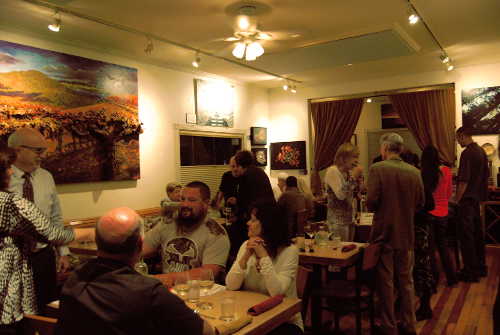 KELSEYVILLE, Calif. – With tremendous gratitude, Habitat for Humanity Lake County held its annual fundraising dinner on Nov. 7 at the Saw Shop Bistro in Kelseyville.
KELSEYVILLE, Calif. – With tremendous gratitude, Habitat for Humanity Lake County held its annual fundraising dinner on Nov. 7 at the Saw Shop Bistro in Kelseyville.
Graciously hosted again by Marie Beery and her staff for the 15th year, the appreciative guests were treated to the warm atmosphere of community and friendship, a spectacular meal, and welcoming music donated once more by local Habitat friend David Neft.
With food and wine donated by the Saw Shop, this year the benefit raised $19,000, all of which will go directly to the Fire Rebuild fund to provide homes for the victims of the Lake County fires of 2015 and 2016.
If you would like to contribute to the Fire Rebuild Fund or if you are interested in volunteering for the rebuild effort, please call Habitat for Humanity Lake County at 707-994-1100 or come by the new office at 15312 Lakeshore Drive in Clearlake to discuss how you might be able to help.
Donations may be made via PayPal by visiting www.lakehabitat.org or by mail to PO Box 1830, Lower Lake CA. 95457.
- Tina Scott
- Posted On
Scott: Thanks to District 4
Thank you, District 4. I am honored to be to the top vote getter to date for District 4.
I have befriended some of the most amazing people in the last year and know I have made some life-long friends because of my campaign.
I have learned there is passion in this county, and people wanting to work together for the greater good of us all.
It is going to take every one of us to move Lake County forward, and this will be done by working together. I look forward to hosting monthly meetings to get to know even more people that want the best for Lake County.
I would like to personally thank my husband Doug and my children for their dedication with my determination to make a difference in my community.
I would also like to thank Gillian Parrillo for all the guidance and support making my victory possible.
There was also countless others that came out spending countless hours to spread the positive word about my candidacy.
I promise I will not let you down and will always work hard for Lake County.
Now the real work begins.
Tina Scott lives in Lakeport, Calif.
- Editor
- Posted On
Commercial Dungeness crab season to open throughout most of the Southern Fishery; one area will remain closed
On Tuesday, Nov. 15, commercial Dungeness crab season will open from Point Reyes in Marin County south, the California Department of Fish and Wildlife (CDFW) announced.
But at the recommendation of state health agencies, the CDFW Director is moving to close the commercial Dungeness crab fishery between Point Reyes and the Sonoma/Mendocino County line and to close the commercial rock crab fishery north of Pigeon Point in San Mateo County.
This has the effect of closing approximately 60 miles of coastline to commercial Dungeness crab fishing that otherwise would have opened on Nov. 15. The fishery north of the Sonoma/Mendocino county line is not scheduled to open until Dec. 1.
The commercial Dungeness crab fishery had been scheduled to open all the way up to the Sonoma/Mendocino county line (about 60 miles north of Point Reyes) on Nov. 15 and the rock crab fishery is otherwise open year round, but some crabs collected and tested showed elevated levels of domoic acid. The naturally occurring toxin can sicken people who consume crab.
At the recommendation of the state Office of Environmental Health Hazard Assessment (OEHHA), CDFW Director Charlton H. Bonham submitted to the Office of Administrative Law an emergency rulemaking to keep the commercial Dungeness crab fishery closed north of Point Reyes (38°00' N. lat.) and to close the commercial rock crab fishery north of Pigeon Point (37°11' N. lat.).
Last fall and winter, domoic acid along the West Coast interrupted Dungeness and rock crab fisheries from Santa Barbara to the Oregon state line.
"Given the very difficult season endured by commercial crabbers and their families last year, we were hopeful to open all areas on time this year," said Director Bonham. "Fortunately, domoic acid levels are much lower than this time last year and, despite this action, we are optimistic we will still be able to have a good season."
The recreational season for Dungeness crab opened on Nov. 5 with a warning from the California Department of Public Health (CDPH) to recreational anglers not to consume the viscera of Dungeness crab caught north of Point Reyes. State and federal laws prohibit the commercial distribution of seafood products that contain domoic acid levels above the federal action level of 30 parts per million in the viscera.
Because of this, OEHHA in consultation with CDPH recommended to CDFW to close or delay the start of the commercial Dungeness crab season north of Point Reyes and close the commercial rock crab fishery north of Pigeon Point.
Closure of the above-referenced commercial fisheries shall remain in effect until the Director of OEHHA, in consultation with the Director of CDPH, determines that domoic acid levels no longer pose a significant risk to public health and recommends the fisheries be open, and the Director of CDFW provides notification to the commercial fisheries.
Recreational fisheries will remain open under a warning to anglers not to eat the viscera of crab caught in the affected areas.
CDFW will continue to coordinate with CDPH and OEHHA to test domoic acid levels in crab along the coast to determine when the fisheries can safely be opened.
CDPH, in conjunction with CDFW, has been actively testing crabs since early September and results from the most recent tests showed that select crabs from the closed areas had elevated levels of domoic acid in their viscera.
Domoic acid is a potent neurotoxin that can accumulate in shellfish, other invertebrates and sometimes fish. It causes illness and sometimes death in a variety of birds and marine mammals that consume affected organisms. At low levels, domoic acid exposure can cause nausea, diarrhea and dizziness in humans. At higher levels, it can cause persistent short-term memory loss, seizures and can in some cases be fatal.
- Elizabeth Larson
- Posted On
Pedestrian hit, killed in Saturday Highway 20 crash
NICE, Calif. – An 84-year-old Lucerne man died Saturday evening after he was struck by a vehicle while crossing Highway 20.
The California Highway Patrol said the fatal crash occurred at 5:20 p.m. Saturday on Highway 20 at Pomo Way, which is the entrance to Robinson Rancheria.
The name of the man who died was not released on Sunday pending the notification of next of kin, the CHP said.
The CHP said that Douglas Williams, 56, of Lucerne was driving his 2001 Ford Escort eastbound on Highway 20 approaching Pomo Way at an unknown speed, while the pedestrian was crossing the highway at Pomo Way, from north to south.
For reasons that investigators have yet to determine, Williams was unable to see the pedestrian until just before he hit him, the CHP said.
Williams swerved his car to the left but was unable to avoid hitting the pedestrian, who hit the car's right side headlight, bumper, hood and windshield, and was thrown onto the highway's south shoulder, according to the CHP.
Northshore Fire medical personnel arrived and pronounced the pedestrian dead at the scene, the CHP said.
The CHP said Williams was wearing his seatbelt at the time of the crash and was not injured.
Williams was evaluated at the scene, and was not under the influence, the CHP reported. It was not known at the time of the CHP's Sunday report if the pedestrian was under the influence of drugs or alcohol.
The crash investigation is still under way, and is being conducted by CHP Officer Alva.
Email Elizabeth Larson at This email address is being protected from spambots. You need JavaScript enabled to view it. . Follow her on Twitter, @ERLarson, or Lake County News, @LakeCoNews.
Upcoming Calendar
Mini Calendar


 How to resolve AdBlock issue?
How to resolve AdBlock issue? 




